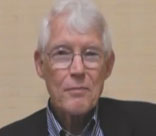User login
Bosutinib finds its place in the CML treatment paradigm
Drug therapy of chronic myeloid leukemia (CML) used to be simple. Or rather, it was narrow and not very effective. For a long time all we had was interferon alpha (IFN-alpha) and hydoxyurea, which failed to protect most patients from progression to the blastic phase. As a result, allotransplant, although associated with high mortality, was the treatment of choice for all eligible patients. Then imatinib came along and replaced a simple but poor choice with a simple but good choice for drug therapy. Now, 12 years later, the drug therapy space for CML is populated by 5 different tyrosine kinase inhibitors (TKIs; imatinib, dasatinib, nilotinib, bosutinib, and ponatinib) and omacetaxine (previously known as homoharringtonine) in addition to IFN-alpha and hydoxyurea. Navigating this space is a challenge, especially for hematologists and oncologists who don’t have the privilege of specializing. The drug at issue is bosutinib, which has been approved for treating adults “with chronic, accelerated, or blast phase Philadelphia chromosome-positive (Ph) CML with resistance or intolerance to prior therapy,” but it has not received approval for frontline therapy. A combined phase 1/2 study demonstrated a 41% cumulative rate of complete cytogenetic response (CCyR) in patients with chronic phase CML with resistance to or intolerance of imatinib who were treated with bosutinib; progressionfree and overall survival at 2 years were 79% and 92%, respectively, with better results for patients with intolerance compared with patients with resistance. The results are quite comparable with those of nilotinib or dasatinib in the same setting.1-3 In contrast, only 24% of patients on bosutinib achieved CCyR if they had prior exposure to dasatinib or nilotinib in addition to imatinib, which is also similar to the results with dasatinib or nilotinib in the third line,4 although follow-up is shorter. Only 2 BCRABL1 kinase mutations confer resistance to bosutinib: the multiresistant T315I mutations and V299L.5
Drug therapy of chronic myeloid leukemia (CML) used to be simple. Or rather, it was narrow and not very effective. For a long time all we had was interferon alpha (IFN-alpha) and hydoxyurea, which failed to protect most patients from progression to the blastic phase. As a result, allotransplant, although associated with high mortality, was the treatment of choice for all eligible patients. Then imatinib came along and replaced a simple but poor choice with a simple but good choice for drug therapy. Now, 12 years later, the drug therapy space for CML is populated by 5 different tyrosine kinase inhibitors (TKIs; imatinib, dasatinib, nilotinib, bosutinib, and ponatinib) and omacetaxine (previously known as homoharringtonine) in addition to IFN-alpha and hydoxyurea. Navigating this space is a challenge, especially for hematologists and oncologists who don’t have the privilege of specializing. The drug at issue is bosutinib, which has been approved for treating adults “with chronic, accelerated, or blast phase Philadelphia chromosome-positive (Ph) CML with resistance or intolerance to prior therapy,” but it has not received approval for frontline therapy. A combined phase 1/2 study demonstrated a 41% cumulative rate of complete cytogenetic response (CCyR) in patients with chronic phase CML with resistance to or intolerance of imatinib who were treated with bosutinib; progressionfree and overall survival at 2 years were 79% and 92%, respectively, with better results for patients with intolerance compared with patients with resistance. The results are quite comparable with those of nilotinib or dasatinib in the same setting.1-3 In contrast, only 24% of patients on bosutinib achieved CCyR if they had prior exposure to dasatinib or nilotinib in addition to imatinib, which is also similar to the results with dasatinib or nilotinib in the third line,4 although follow-up is shorter. Only 2 BCRABL1 kinase mutations confer resistance to bosutinib: the multiresistant T315I mutations and V299L.5
Drug therapy of chronic myeloid leukemia (CML) used to be simple. Or rather, it was narrow and not very effective. For a long time all we had was interferon alpha (IFN-alpha) and hydoxyurea, which failed to protect most patients from progression to the blastic phase. As a result, allotransplant, although associated with high mortality, was the treatment of choice for all eligible patients. Then imatinib came along and replaced a simple but poor choice with a simple but good choice for drug therapy. Now, 12 years later, the drug therapy space for CML is populated by 5 different tyrosine kinase inhibitors (TKIs; imatinib, dasatinib, nilotinib, bosutinib, and ponatinib) and omacetaxine (previously known as homoharringtonine) in addition to IFN-alpha and hydoxyurea. Navigating this space is a challenge, especially for hematologists and oncologists who don’t have the privilege of specializing. The drug at issue is bosutinib, which has been approved for treating adults “with chronic, accelerated, or blast phase Philadelphia chromosome-positive (Ph) CML with resistance or intolerance to prior therapy,” but it has not received approval for frontline therapy. A combined phase 1/2 study demonstrated a 41% cumulative rate of complete cytogenetic response (CCyR) in patients with chronic phase CML with resistance to or intolerance of imatinib who were treated with bosutinib; progressionfree and overall survival at 2 years were 79% and 92%, respectively, with better results for patients with intolerance compared with patients with resistance. The results are quite comparable with those of nilotinib or dasatinib in the same setting.1-3 In contrast, only 24% of patients on bosutinib achieved CCyR if they had prior exposure to dasatinib or nilotinib in addition to imatinib, which is also similar to the results with dasatinib or nilotinib in the third line,4 although follow-up is shorter. Only 2 BCRABL1 kinase mutations confer resistance to bosutinib: the multiresistant T315I mutations and V299L.5







